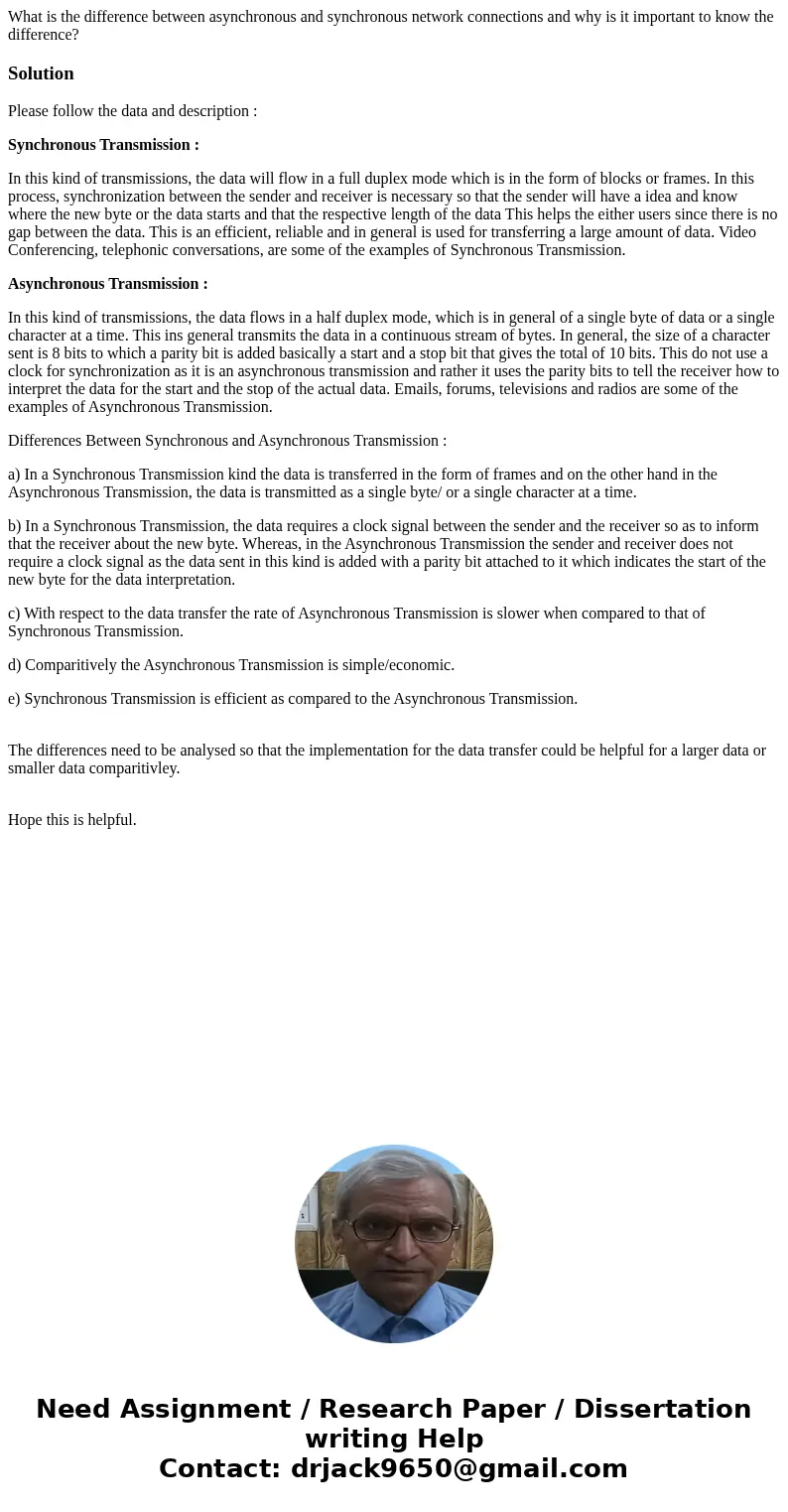What is the difference between asynchronous and synchronous
What is the difference between asynchronous and synchronous network connections and why is it important to know the difference?
Solution
Please follow the data and description :
Synchronous Transmission :
In this kind of transmissions, the data will flow in a full duplex mode which is in the form of blocks or frames. In this process, synchronization between the sender and receiver is necessary so that the sender will have a idea and know where the new byte or the data starts and that the respective length of the data This helps the either users since there is no gap between the data. This is an efficient, reliable and in general is used for transferring a large amount of data. Video Conferencing, telephonic conversations, are some of the examples of Synchronous Transmission.
Asynchronous Transmission :
In this kind of transmissions, the data flows in a half duplex mode, which is in general of a single byte of data or a single character at a time. This ins general transmits the data in a continuous stream of bytes. In general, the size of a character sent is 8 bits to which a parity bit is added basically a start and a stop bit that gives the total of 10 bits. This do not use a clock for synchronization as it is an asynchronous transmission and rather it uses the parity bits to tell the receiver how to interpret the data for the start and the stop of the actual data. Emails, forums, televisions and radios are some of the examples of Asynchronous Transmission.
Differences Between Synchronous and Asynchronous Transmission :
a) In a Synchronous Transmission kind the data is transferred in the form of frames and on the other hand in the Asynchronous Transmission, the data is transmitted as a single byte/ or a single character at a time.
b) In a Synchronous Transmission, the data requires a clock signal between the sender and the receiver so as to inform that the receiver about the new byte. Whereas, in the Asynchronous Transmission the sender and receiver does not require a clock signal as the data sent in this kind is added with a parity bit attached to it which indicates the start of the new byte for the data interpretation.
c) With respect to the data transfer the rate of Asynchronous Transmission is slower when compared to that of Synchronous Transmission.
d) Comparitively the Asynchronous Transmission is simple/economic.
e) Synchronous Transmission is efficient as compared to the Asynchronous Transmission.
The differences need to be analysed so that the implementation for the data transfer could be helpful for a larger data or smaller data comparitivley.
Hope this is helpful.

 Homework Sourse
Homework Sourse